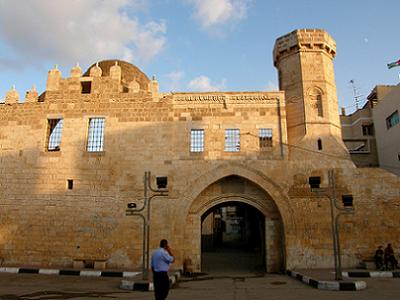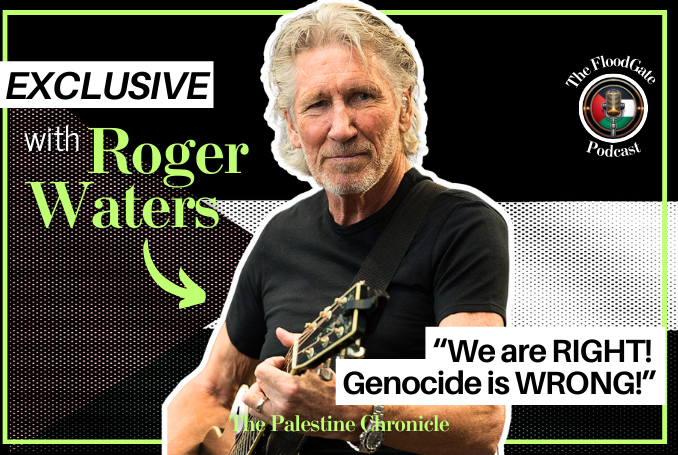Gaza: The Untold Story

Conquerors came and went, and Gaza stood where it still stands today.
By RAMZY BAROUD
It’s incomprehensible that a region such as the Gaza Strip, so rich with history, so saturated with defiance, can be reduced to a few blurbs, sound bites and reductionist assumptions, convenient but deceptive, vacant of any relevant meaning, or even true analytical value.
The fact is that there is more to the Gaza Strip than 1.5 million hungry Palestinians, who are supposedly paying the price for Hamas’s militancy, or Israel’s ‘collective punishment’, which ever way the media decide to brand the problem.
More importantly, Gaza’s existence since time immemorial must not be juxtaposed by its proximity to Israel, failure or success in ‘providing’ a tiny Israeli town – itself built on conquered land that was seen only 60 years ago as part of the Gaza Province – with its need for security. It’s this very expectation that made the killing and wounding of thousands of Palestinians in Gaza a price worth paying, in the callous eyes of many.
These unrealistic expectations and disregard of important history will continue to be costly, and will only serve the purpose of those interested in swift generalizations. Yes, Gaza might be economically dead, but its current struggles and tribulations are consistent with a legacy of conquerors, colonialism and foreign occupations, and more, its peoples collective triumph in rising above the tyranny of those invaders.
In relatively recent history, Gaza became a recurring story following the 1948 influx of refugees, who were driven from their homes by Zionist militias or fled for their families’ sake, hoping to return once Palestine was recovered. They settled in Gaza, subsisting in absolute poverty, a situation that continues, more or less, to this day.
The history of Gaza, and the place itself was largely irrelevant, if not revolting from the point of view of the refugees who poured into the Strip mostly from the south of Palestine, for it represented the pinnacle of their loss, humiliation and, at times, despair. It mattered little to the peasant refugees as they fled to Gaza that that they probably walked on the same ancient road that ran along the Palestinian coast when Gaza was once the last metropolis for travelers to Egypt, just before they embarked on an unforgiving desert journey through Sinai. So what if Gaza was described as the city, as told in the Book of Judges, where Samson performed his famous deed and perished. Christianity was relevant to the refugees insofar as a few of Gaza’s ancient churches provided shelter to the tired bodies escaping snipers, bullets and massacres. Even the strong belief amongst Muslims that Prophet Mohammed’s great-grandfather, Hashem, died on one of his journeys from Mecca to the Lavent and was buried in Gaza, was largely sentimental. His shrine in Gaza City was visited by numerous refugees, who kneeled and prayed to God that they, some day soon, would be sent back to their humble existence, and their ways of life from which they have been forcefully estranged.
But Gaza’s history became more relevant to the refugees when it appeared that their temporary journey to the Strip was likely to be extended. Only then the areas’ many stories of conquerors, tragedies, triumphs but also sheer goodness, became of essence. A pilgrim to the Holy Land, who passed through Gaza in 570 AD, wrote in Latin, “Gaza is a splendid city, full of pleasant things; the men in it are most honest, distinguished by every generosity, and warm to friends and visitors.”
Gaza’s history became even more relevant when the refugees realized that their violent encounters with Israel were not yet over, and that they needed the moral tenacity to survive what would eventually be viewed as one of most severe humanitarian catastrophes in recent memory. And indeed, there was much history to marvel upon, and from which to extract strength and substantiation.
Conquerors came and went, and Gaza stood where it still stands today. This was the recurring lesson for generations, even millennia. Ancient Egyptians came and went, as did the Hyksos, the Assyrians, the Persians, the Greeks, the Romans, the Ottomans, the British, and now the Israelis. And through it all, Gaza stood strong and defiant. Neither Alexander the Great’s bloody conquest of 332 BC, nor Alexander Janneus’s brutal attack of 96 BC broke Gaza’s spirit or took away from its eternal grandeur. It always rose again to reach a degree of civilianization unheard of, as it did in the 5th century AD. It was in Gaza that the Crusaders surrendered their strategic control of the city to Saladin in 1170, only to open up yet another era of prosperity and growth, occasionally interrupted by conquerors and outsiders with colonial designs, but to no avail. All the neglected ruins of past civilizations were only reminders that Gaza’s enemies would never prevail, and would, at best, merely register their presence by another neglected structure of concrete and rocks.
Now Gaza is undergoing another phase of hardship and defiance. It’s modern conquerors are as unpitying as its ancient ones. True, Gaza is ailing, but standing, it people resourceful and durable as ever, defiant as they have always been, and hell-bent on surviving, for that’s what Gazans do best. And I should know, its my hometown.
– Excerpts from this article will appear in Ramzy Baroud’s new book, My Father Was a Freedom Fighter – Gaza: The Untold Story (Pluto Press, London).
-Ramzy Baroud (www.ramzybaroud.net) is an author and editor of PalestineChronicle.com. His work has been published in many newspapers, journals and anthologies around the world. His latest book is The Second Palestinian Intifada: A Chronicle of a People’s Struggle (Pluto Press, London).










































0 Comments